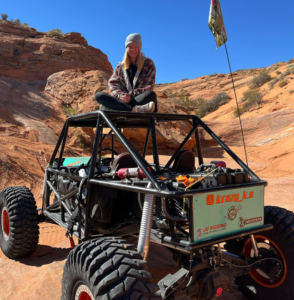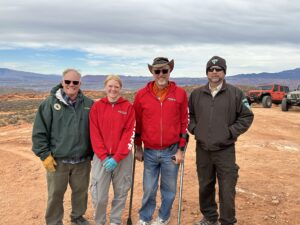 H.B. 0180, the Off Road Vehicle Safety Education act, was passed in the 2022 Legislative Session with an effective date of January 1, 2023. Enforccement will not begin until February 1, 2023. This article is to summarize the interview with Chase Pili, the DNR OHV Program Director, and Kevin Mortensen from Ride Utah. The full video can be watched at https://youtu.be/_EtjOtk48ek
H.B. 0180, the Off Road Vehicle Safety Education act, was passed in the 2022 Legislative Session with an effective date of January 1, 2023. Enforccement will not begin until February 1, 2023. This article is to summarize the interview with Chase Pili, the DNR OHV Program Director, and Kevin Mortensen from Ride Utah. The full video can be watched at https://youtu.be/_EtjOtk48ek
Why the Change: There has been a huge increase in OHV use in Utah since 2020. This bill has been in the works for the past 3 years and was prompted by efforts to reduce the number of complaints associated with Off Highway Vehicle use, both on trails and on the streets. The bill was authored by OHV advocates after considerable input from OHV users of all different types. from a wide variety of users types.
What are the Rules for Registration Requirements? Utah Residents will be issued hard plates for street legal OHV vehicles as they have been in the past. OHV registration stickers will be replaced with a special OHV tan hard plate when current registration expires. This will require a trip to the DMV the first time to get the plate. Renewals after you are issued a plate can be done online. Stickers will still be issued for OHV registration for all motorcycles and snowmobiles. Hard plates will make it easier to identify and report bad actors without conflict.
Out of State Residents must apply online (www.OHV.Utah.Gov) for their OHV Permit. The sticker will be mailed to them, but they will be issued a temporary if they are already in the state. You will be required to provide proof of course completion to complete your application.
Who must take the OHV Course? Every OHV driver 18 years of age or older that recreates on public lands must take the class. By definition, this includes Type 1 (ATV), Type 2 (UTV Sxs), Type 3 (Non Street Legal Full Size-Buggies), and Off Highway Motorcycles. Both Utah residents and non residents must take the course, including those that rent vehicles. E-Bikes are not considered OHV vehicles and are not subject to the course requirements.
Street Legal Full Size Vehicles (i.e. Jeeps), snowmobiles, husbandry vehicles or registrants at a sanctioned OHV event are exempt and not required to take the course.
More about the course The course is FREE to everyone, if you go to a website that charges a fee, you should go back to www.OHV.Utah.Gov It takes about 20-25 minutes and includes questions in each section that you must answer correctly to complete it (The answers are in the text right above the questions)
What about the Youth Course? If a driver is under 18, they must take a Youth course as they have in the past. The cost for the Youth Course is the same $35 that has been charged for years, and can be done online or in person. When a person completes the Youth course, that Certificate will be good for life, they will not have to take the Over 18 course. A separate change was also made last year that allows youth of any age to take the class as long as they can safely operate the controls (the minimum age was 8 year)
How do I prove I took the course? After completion, you can download a digital copy for your phone or print it out. I recommend if you store it on your phone as a picture you put it in a special folder or mark it as a favorite to make it easy to locate.
What are the penalties for violation of the rules? Fines may be levied for violations as they have been in the past by law enforcement and local courts, and are considered either infractions or Class B or C misdemeanors. A new provision applies to users that cause damage to trail systems which will add to any fines the requirement that the court shall order the person to perform community service in the form of repairing any damage to the public land in the area where the damage occurred. The court shall determine the approximate value of the damage caused and calculate the number of hours required by using the rate of $25 per hour. What does this mean? If a violation causes $2500 worth of damage on a trail, they will be required to perform 100 hours of community service in the local area. Being ordered to do 100 hours of work by a court is probably not what most people would want to do on their time off, especially if they have to travel far from home and incur travel expenses.
Contrary to many people’s comments online, fines assessed do not go into the OHV budget, they are assessed by local municipalities.
Summary We should not expect this course or the registration changes to completely eliminate complaints, but whatever improvement we get will help us in our fight to keep trails open. Education will always be our best resource to keep our trails open!
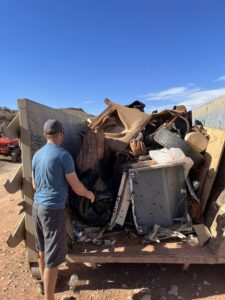
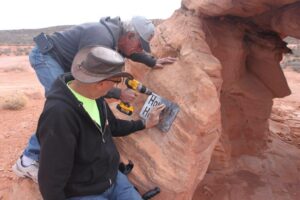
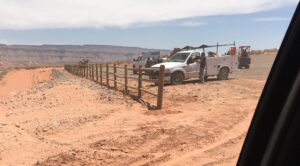 together, along with our partners, the Bureau of Land Management is the way we will win the fight to keep our public lands accessible.
together, along with our partners, the Bureau of Land Management is the way we will win the fight to keep our public lands accessible.
 People say sausage making is not a pretty process, but it sure tastes great when you put it on the grill. The same can be said about politics and legislation. UPLA has been busy in the sausage making business of monitoring and contacting the Sponsors about bills
People say sausage making is not a pretty process, but it sure tastes great when you put it on the grill. The same can be said about politics and legislation. UPLA has been busy in the sausage making business of monitoring and contacting the Sponsors about bills Every public land user has thought at one time or another how to get help if you had an emergency situation and needed to get help. We just had a friend from California go up for a few days to Death Valley, alone, He was supposed to have met a friend in Beatty last night and he no showed, so yesterday they called the Ranger in the area who found him. He ran into a flash flood and his vehicle got really stuck in the mud up to the frame. He was in good shape after being stuck for 3 days with plenty of water and food, but needed help to get the truck out before more rains come through the wash he’s in. A crew of 3 rigs is heading down to St George to get him out, but without the Ranger locating him the rescue would have been much more difficult.
Every public land user has thought at one time or another how to get help if you had an emergency situation and needed to get help. We just had a friend from California go up for a few days to Death Valley, alone, He was supposed to have met a friend in Beatty last night and he no showed, so yesterday they called the Ranger in the area who found him. He ran into a flash flood and his vehicle got really stuck in the mud up to the frame. He was in good shape after being stuck for 3 days with plenty of water and food, but needed help to get the truck out before more rains come through the wash he’s in. A crew of 3 rigs is heading down to St George to get him out, but without the Ranger locating him the rescue would have been much more difficult. H.B. 0180, the Off Road Vehicle Safety Education act, was passed in the 2022 Legislative Session with an effective date of January 1, 2023. Enforccement will not begin until February 1, 2023. This article is to summarize the interview with Chase Pili, the DNR OHV Program Director, and Kevin Mortensen from Ride Utah. The full video can be watched at
H.B. 0180, the Off Road Vehicle Safety Education act, was passed in the 2022 Legislative Session with an effective date of January 1, 2023. Enforccement will not begin until February 1, 2023. This article is to summarize the interview with Chase Pili, the DNR OHV Program Director, and Kevin Mortensen from Ride Utah. The full video can be watched at 